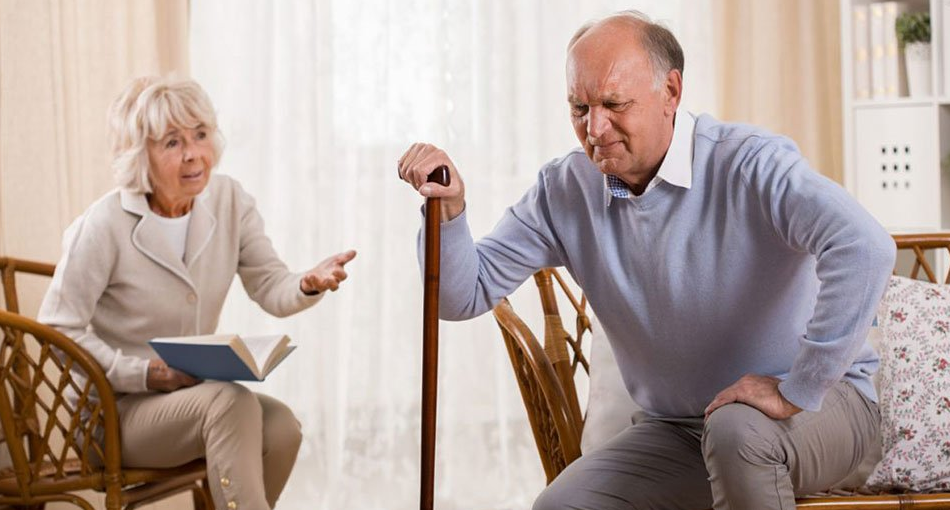
What are the most common spinal problems as we age?
In the next 25 years, it is estimated that the number of Australians over the age of 60 will double.
When you combine that with the fact that between 70% and 85% of the population will experience back pain at least once in their lives, you get a significant increase in older people suffering from spinal impairments.
The spinal region is complex and is subjected to age related conditions earlier and more often than other parts of the body. Wear and tear over the course of time to components of the spine can lead to chronic pain and disability if strategies aren’t in place to combat it.
In a snowball effect, a decrease in musculoskeletal function increases the probability and severity of soft tissue and skeletal damage from falls along with increasing the likelihood of complications during surgery.
Age-related changes in the musculoskeletal system occur due to alteration in a multitude of tissues, such as bone and soft tissue including muscles, articular cartilage, intervertebral discs, tendons, ligaments and joint capsules.[1]
Various mechanisms on a cellular and systemic level have been identified to contribute to age-related changes in the musculoskeletal system.[2]
At the cellular level:
- cellular senescence, leads to the decreased ability of somatic cells to replicate, repair, and maintain tissue
- apoptosis (programmed cell death), leads to decreased cell numbers in the affected tissue
- increasing generation of oxidative stress due to generation of reactive oxygen species leads to cell damage
At the systemic level:
- declining levels of trophic hormones, leading to altered tissue environment and response of tissue to use and injury
- general age-related changes, such as a decrease in reaction time, proprioception, vision, hearing, pulmonary and cardiovascular function, leading to decreased mobility and therefore affecting the musculoskeletal system
What are the most common spinal problems as we age?
The main functions of the spine are to protect the spinal cord, to provide mobility to the trunk and to transfer loads from the head and trunk to the pelvis. That leaves a very large scope for conditions related to the spine to cause pain.
“Degenerating spondylosis” or spinal osteoarthritis is the most common and is almost inevitable with increasing age. Long term studies have shown evidence of spondylosis in 60% of women and 80% of men by the age of 49 years, and in 95% of both sexes by the age of 70 years.[3]
The term “spondylosis” was historically used to distinguish between degenerative changes in the spine and those in synovial joints such as facet joints. However, it has been shown that changes in the spine and osteoarthritis of the synovial joints coexist and in most cases are interrelated.[4]
Spinal osteoarthritis is a cause of bone spurs within the vertebral body and is usually accompanied by disc space narrowing.
The Intervertebral Discs
The intervertebral discs transmit load from body weight and muscle activity through the spinal column, providing flexibility to the spine by allowing bending, flexion and torsion. As we age, these discs lose hydration, height and elasticity.
When these discs first begin to degenerate, abnormal stress is placed on the surrounding joints and muscles of the spine. Many specialist physiotherapists believe that intervertebral discs are a major source of back and neck pain.
How can physiotherapy help?
Treating any spinal disorder is complex and your physio will tailor a management plan to suit your needs. Your physiotherapist can diagnose a number of spinal conditions clinically with a thorough examination, including careful questioning and in depth assessment.
Studies have shown that rehabilitation and participating in an exercise program supervised by Physiotherapists allows re-education and reconditioning of the muscles that support the spine.
Your physio is an expert in safely mobilising the spine, allowing the back to move with proper range and can reduce pain.
[1] Grecula MJ, Caban ME (2005) Common orthopaedic problems in the elderly patient. J Am
Coll Surg 200:774–783
[2] Hamerman D (1997) Aging and the musculoskeletal system. Ann Rheum Dis 56:578–585
[3] Junghanns SA (1971) The human spine in health and disease. Grune and Stratton, New York
London
[4] Vernon-Roberts B, Pirie CJ (1977) Degenerative changes in the intervertebral discs of the
lumbar spine and their sequelae. Rheumatol Rehabil 16:13–21



